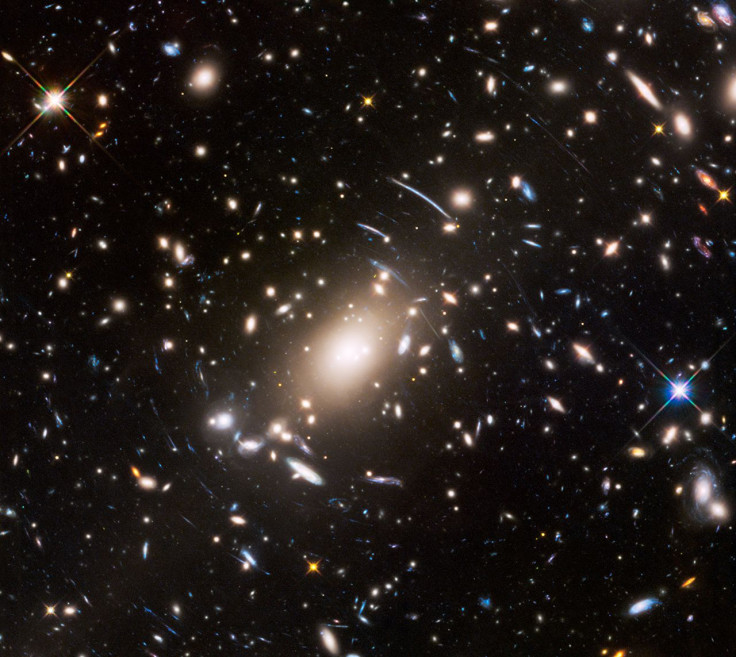Exotic Dark Matter In Galaxy Clusters Hints At Unknown Physics, Astrophysical Process

As if dark matter wasn’t already mysterious and elusive enough, a theoretical variant takes it to a whole new level — exotic dark matter. It is thought to exist at the cores of galaxy clusters and phenomena that can be ascribed to it hint at the existence of fundamental physics that we still don’t know about.
Galaxy clusters are exactly what the name suggests — massive clusters that contain thousands of galaxies and hot gas — and are the largest cosmic structures in the universe. According to present-day models of dark matter, the centers of these clusters are extremely dense and they all have one huge galaxy that never moves away from the cluster’s core.
All galaxy clusters also contain one brightest cluster galaxy, which is brighter than all the other galaxies in the cluster. The BCG (generally an elliptical galaxy; they are among the most massive galaxies in the universe) is thought to have formed as a result of merger between a number of smaller galaxies within the cluster.
According to the dark matter theory derived from the Standard Model (this dark matter is called “cold dark matter”), the large density of dark matter at a galaxy cluster’s core tightly binds the BCG to the center. But in a paper published online Thursday, researchers used observations of 10 galaxy clusters, along with simulations, that show the BCG continues to wobble long after the rest of the cluster has relaxed following the merging of galaxy clusters.
The team of researchers that carried out the simulations was led by David Harvey from École Polytechnique Fédérale de Lausanne, Switzerland.
“We found that that the BCGs ‘slosh’ around at the bottom of the halos. This indicates that, instead of a dense region in the center of the galaxy cluster, there is a much shallower central density — a striking signal of exotic forms of dark matter right at the heart of galaxy clusters,” Harvey said in a statement Thursday.
The researchers plan to observe a larger number of galaxy clusters in the future to “determine if BCG wobbling originates in new fundamental physics or a novel astrophysical phenomenon.”
The massive size of galaxy clusters helps astronomers observe them. The gravity generated by their bulk makes them act as gravitational lenses, which bend light that passes through them, allowing scientists to create a map of dark matter within them. This, in turn, allows for figuring out where the cluster center is and also observing the BCG wobble around it.
Dark matter, which has never been directly observed but only indirectly inferred, accounts for 85 percent of all the mass in the observable universe, and for 27 percent of all matter and energy. Dark energy, on the other hand, constitutes an overwhelming 68 percent of the universe, while the regular matter and energy we interact with, given our physical senses and current technology, accounts for less than 5 percent of totality of the universe.
The paper, titled “A detection of wobbling Brightest Cluster Galaxies within massive galaxy clusters," appeared in the journal Monthly Notices of the Royal Astronomical Society. A copy is available on the preprint server arXiv.
© Copyright IBTimes 2025. All rights reserved.





















